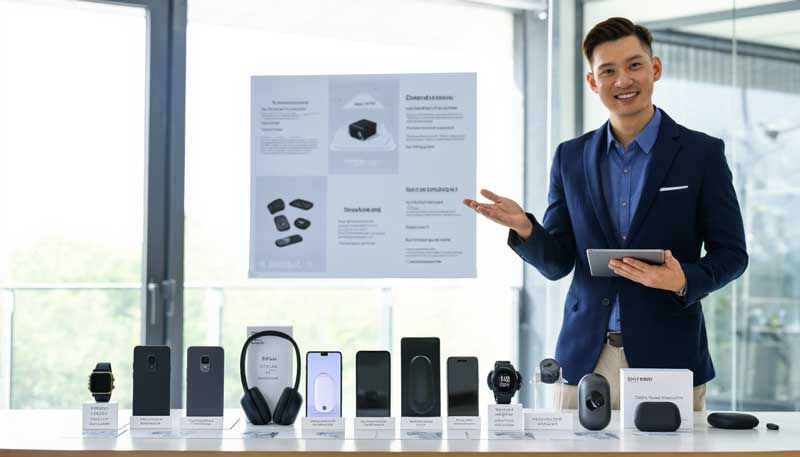Buying Guide ➢ Crowdfunding Gadgets Safety
Crowdfunding Gadgets: How to Back Projects Safely

Crowdfunding platforms like Kickstarter and Indiegogo have democratized innovation, allowing inventors to bring amazing gadgets to market. However, they've also created new risks for consumers. This guide teaches you how to evaluate crowdfunding projects, protect your investment, and maximize your chances of receiving a working product.
Understanding Crowdfunding Risks
Unlike traditional retail purchases, crowdfunding contributions come with inherent risks:
- No guarantee of delivery: Projects can fail, be delayed, or be canceled
- Limited legal protection: You're not buying a product—you're supporting a project
- Quality variations: Final products may differ significantly from prototypes
- Timeline uncertainty: Delays of 6-12 months are common, even for successful projects
Red Flags to Avoid
These warning signs indicate high-risk projects you should avoid:
Project Creator Red Flags
- First-time creators: No previous successful campaigns or relevant experience
- Vague credentials: Unclear or exaggerated professional backgrounds
- Poor communication: Slow responses to questions or concerns
- Unrealistic timelines: Overly ambitious delivery dates for complex products
Product Red Flags
- Revolutionary claims: Products that seem "too good to be true"
- No working prototype: Only CGI renders or concept sketches
- Impossible specifications: Features that violate laws of physics or current technology limits
- Vague technical details: Lack of specific information about how the product works
Campaign Red Flags
- Suspicious funding patterns: Large jumps in funding from few backers
- Stock photos: Generic images instead of original product photos
- Copied content: Text or images lifted from other sources
- No manufacturing plan: Unclear about how they'll scale production
Green Flags for Promising Projects
Look for these positive indicators when evaluating campaigns:
Strong Project Foundation
- Experienced team: Proven track record in relevant industries
- Working prototypes: Functional demonstrations, not just concepts
- Transparent communication: Regular updates and honest about challenges
- Detailed timeline: Realistic milestones with buffer time for delays
Solid Business Planning
- Manufacturing partnerships: Established relationships with production facilities
- Regulatory compliance: Understanding of certifications needed (FCC, CE, etc.)
- Post-campaign support: Plans for customer service and warranty support
- Intellectual property: Patents filed or pending for key innovations
Due Diligence Checklist
Before backing any project, complete this research checklist:
Creator Research
- Google the team members' names and professional backgrounds
- Check LinkedIn profiles for experience verification
- Look up any previous crowdfunding campaigns they've run
- Search for any negative news or controversy
Product Research
- Reverse image search to verify original photos/videos
- Check if similar products already exist at lower prices
- Verify claimed specifications against current technology limits
- Read comments section for technical questions and responses
Financial Research
- Analyze funding patterns for suspicious activity
- Compare funding goal to stated manufacturing costs
- Check if shipping costs are realistic for your location
- Calculate total cost including potential customs fees
Platform-Specific Considerations
Kickstarter
- All-or-nothing funding: Projects only receive money if they reach their goal
- Stricter curation: More rigorous project approval process
- Better creator accountability: Stronger enforcement of project rules
- Limited refund options: Difficult to get money back after backing
Indiegogo
- Flexible funding options: Creators can keep partial funding
- Less strict curation: Wider variety of projects, including some questionable ones
- InDemand feature: Allows continued sales after campaign ends
- Varied quality control: More responsibility on backers to evaluate projects
Protection Strategies
Minimize your risk with these protective measures:
Financial Protection
- Use credit cards: Better dispute resolution than debit cards or PayPal
- Set spending limits: Never back more than you can afford to lose
- Diversify backing: Support multiple small projects rather than one large one
- Document everything: Save campaign pages, emails, and update communications
Timeline Management
- Add buffer time: Expect delivery 6-12 months later than promised
- Don't depend on delivery dates: Never back time-sensitive gifts
- Follow updates regularly: Stay informed about project progress
- Ask questions early: Get clarifications before backing
What to Do If Things Go Wrong
If a project fails to deliver or significantly underperforms:
Immediate Actions
- Document all communications and promised delivery dates
- Contact the project creator directly for explanation
- Report to the crowdfunding platform if terms were violated
- Connect with other backers through comments or social media
Recovery Options
- Credit card chargebacks: Dispute charges within 60-120 days
- Platform intervention: Some platforms offer limited backer protection
- Legal action: Consider for large amounts, though often not cost-effective
- Public pressure: Social media campaigns can sometimes motivate creators
Conclusion
Crowdfunding can be an exciting way to access innovative products before they hit the mainstream market. However, success requires careful evaluation, realistic expectations, and appropriate risk management. By following this guide's principles, you can enjoy the benefits of crowdfunding while protecting yourself from common pitfalls.
Remember: you're not buying a product—you're investing in an idea. Some investments pay off spectacularly, while others teach expensive lessons. The key is making informed decisions and never risking more than you can afford to lose completely.
Share this article:
React to this article: